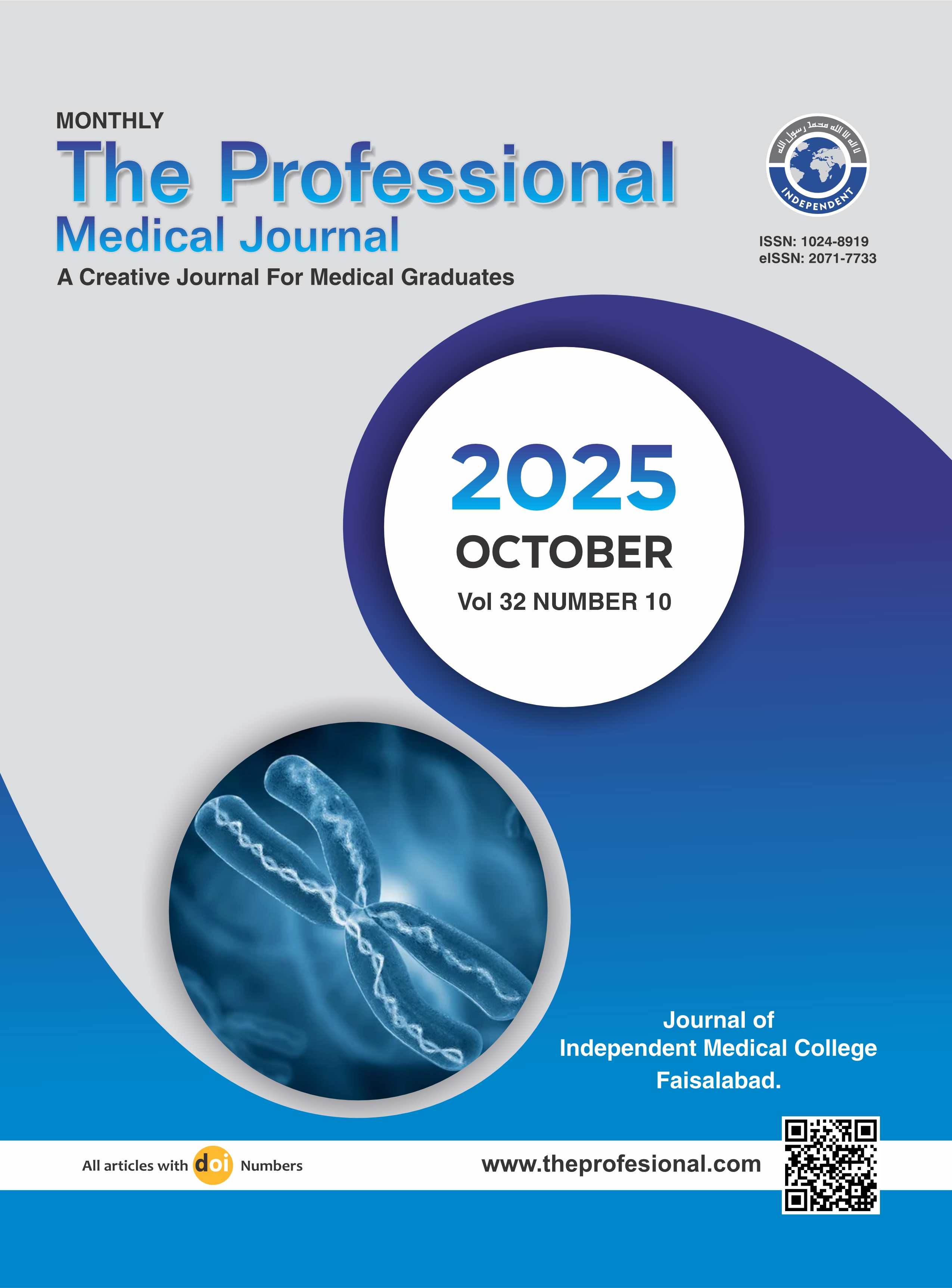Comparing Doppler indices of umbilical artery in pregnancy-induced hypertension and normal pregnant women during the third trimester of pregnancy.
DOI:
https://doi.org/10.29309/TPMJ/2025.32.10.10020Keywords:
Pregnancy Induced Hypertension, Pulsatility Index, Placental Insufficiency, Resistive Index, Spectral Doppler, Umbilical ArteryAbstract
Objective: To compare Doppler indices of umbilical artery - resistance index (RI), pulsatility index (PI), and systolic to diastolic (SD) ratio between pregnancies complicated by pregnancy induced hypertension (PIH) and normotensive pregnancies in the third trimester. Study Design: Comparative Cross-Sectional Study. Setting: Aziz Fatimah Hospital, Faisalabad, Pakistan. Period: June 2024 to December 2024. Methods: In this study, 100 singleton pregnancies (50 PIH, 50 normotensive) underwent ultrasound Doppler assessment at 32‑38 weeks’ gestation. Mean PI, RI, and S/D ratio were calculated for each group. Independent t-test and Mann-Whitney U test were applied, with significance at p < 0.05. Results: All Doppler indices were significantly higher in the PIH group (PI 1.26 ± 0.25; RI 0.72 ± 0.06; S/D 4.08 ± 0.58) than in normotensive controls (PI 0.81 ± 0.13; RI 0.55 ± 0.06; S/D 2.08 ± 0.27) (p < 0.001 for each). Elevated indices indicate increased placental vascular resistance consistent with impaired fetoplacental perfusion. Conclusion: Pregnancy‑induced hypertension is associated with significantly raised umbilical‑artery PI, RI, and S/D ratio, corroborating previous evidence of placental insufficiency in hypertensive pregnancies. Routine third‑trimester Doppler surveillance and serial monitoring of these indices may facilitate early intervention and improve perinatal outcomes.
Downloads
Published
Issue
Section
License
Copyright (c) 2025 The Professional Medical Journal

This work is licensed under a Creative Commons Attribution-NonCommercial 4.0 International License.


